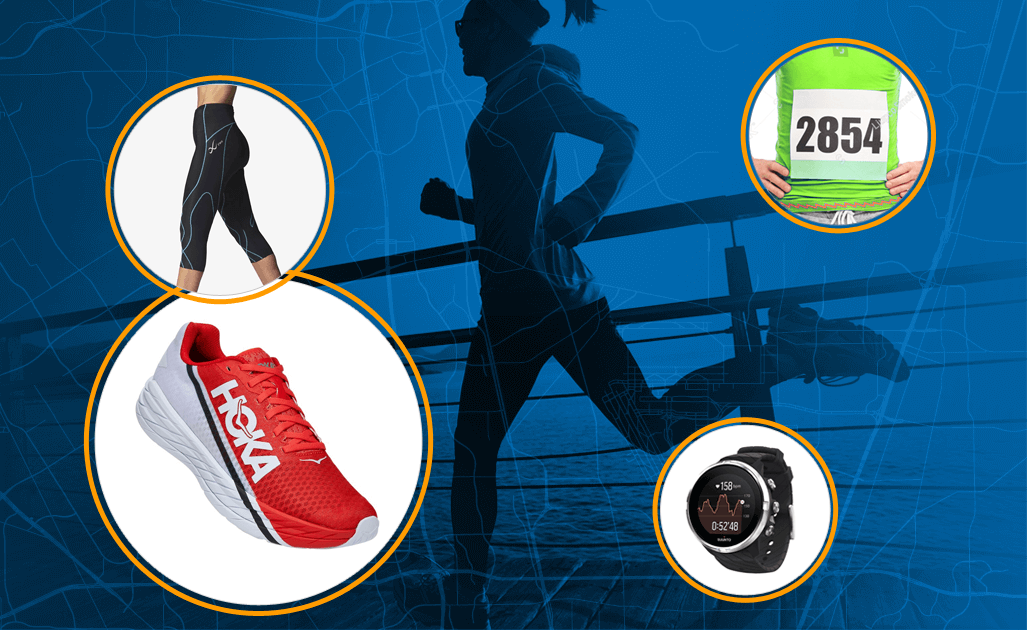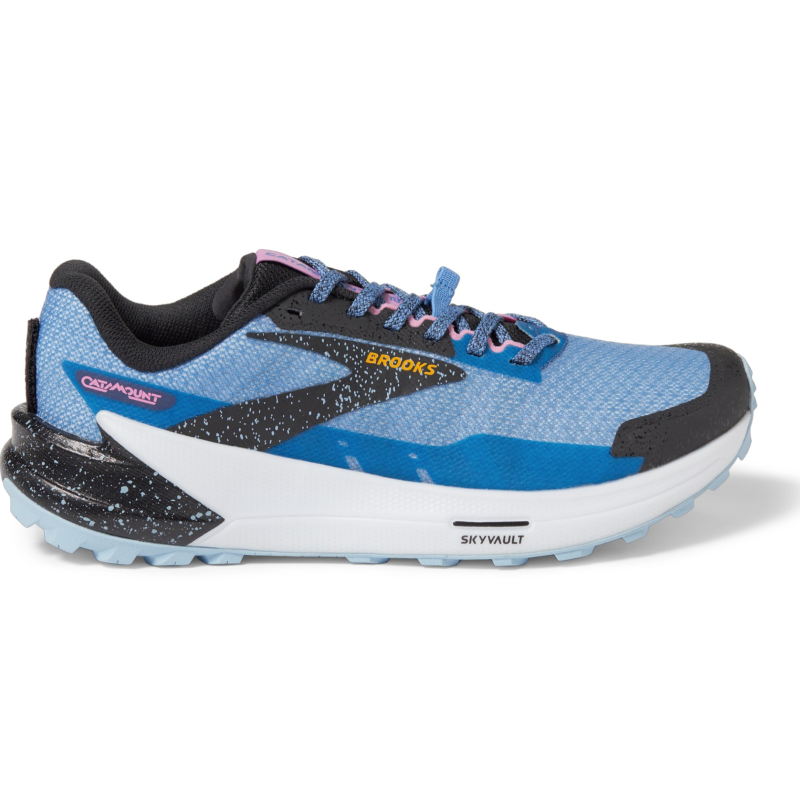
Of the trail shoes I’ve tried, the Catamount 2 is my favorite. It fits my feet like a supersuit and is remarkably stable and responsive. I tested this shoe across thirty miles of dirt, snow, ice, roots, and rocks. Some of those miles were my fastest on trail, others were casual and chatty with friends.
Before diving into this review, I’d like to explain my qualifications. I have not tried the original Catamount, so I cannot compare the models. I’m not a shoe connoisseur, but I’m learning. Gearheads beware, in this review you won’t find much technical lingo. I don’t know the secret sauce that goes into the Skyvault plate, the name of the lug pattern, or the weave of the upper. But I will discuss my experience with the shoe and how it has served me.
For context, these are the trail shoes I’ve put hundreds of miles on:
- Salomon X-Mission 3
- Salomon Trailster GTX
- Salomon Sense Ride 3
- La Sportiva Kaptiva
- The North Face Flight VECTIV
Of these, I believe the Catamount 2 is most comparable to the Kaptiva. Both are responsive, lightweight and well-lugged race shoes. They both shine in short, technical races and may result in sore feet if you’re out for (very) long days. It’s a necessary trade-off. You can’t have a shoe that’s both uber-supportive and cushioned and provides that trail-feel and responsiveness needed for shorter, snappier efforts. Personally, I’ll take sore feet for responsiveness – and reduced risk of a rolled ankle – any day.
I have average feet in terms of width, size (8.5 women’s), and arch height. I do have slight Taylor’s bunions on each foot, which can sometimes cause discomfort in narrower shoes.
Now that you know where I’m coming from, let’s talk about the characteristics of the shoe.
The shoe is snug in the best way. I noticed this when I first popped my feet into them. My feet stay locked in while I’m running, and I haven’t felt a hint of hotspots or blisters. The upper seems exceptionally durable and well-constructed to keep the foot in place while maintaining comfort. The fit allows the user to fully utilize the responsive design of the midsole and outsole.
In case you couldn’t tell, this is one of my favorite parts of the shoe. I live in the White Mountains of New Hampshire, and anyone who’s run (or hiked) here knows that our bodies take a lot of abuse from the rocky, rooty, steep, technical trails. The Catamount 2 handles this terrain marvelously. I have learned to trust that the shoe will provide support on each step I take, and if I make a mistake, it’ll do its darndest to make up for it. It seems to find the most forgiving way to land my feet.
Last summer, I sprained my ankle on a technical descent, and nearly every run since I’ve had what I call “bad steps,” where I land at the right angle to tweak the weakened ligament. I haven’t had a single “bad step” in the Catamount 2. I think this is in-part because of my strengthening regimen, but I have full confidence it is also because of the way the shoe responds to terrain. I’ve never worn shoes that give me confidence to push descents as much as these do. I couldn’t place as much trust in the Kaptiva and the Flight Vectiv as I frequently had bad steps in these shoes. I wish I could explain the magic behind why the Catamount 2 is much more stable and confidence-inducing at ground impact.
As I mentioned, the trade-off to responsiveness is that comfort is in some ways sacrificed. I can feel some soreness in my forefeet from the impact, but the benefits far outweigh this small cost.
As I mentioned, I put these shoes through the ringer. My second run in them was an FKT attempt on the Franconia Ridge Loop, an iconic route in the White Mountains, in March; full winter conditions the whole way. I threw a pair of Kahtoola Exospikes on and sent it as hard as I could for 8 miles and some 4,000 ft of gain and descent. Although the shoes are not designed for winter use, they repelled the snow quite well and my feet stayed dry. I wouldn’t recommend using them in this way, particularly for breaking trail or for extended periods in the cold, but know that these shoes can handle snow decently if they have to. No fault of the shoe, but don’t forget to double knot the laces if you’re pushing the pace! I lost about one minute re-tying them.
There’s nothing like New England trails in March and April to test a pair of shoes! As the shoulder season rolled on, I introduced the Catamount 2 to mud, dirt, and smooth and jagged rocks. The lugs proved themselves worthy of all terrain with a combination of prominence and grip. I didn’t have a single jarring slip, the kind that causes your heart rate to jump to over 200 bpm for a brief instant. In fact, I didn’t slip at all. These shoes charged up 20%+ grade wet slabs and landed solidly on slanted boulders. The lightness of the shoes felt good on more runnable solid ground and I didn’t feel that they held me back, but they didn’t have that propulsion that a carbon plate provides. If you’re looking for a shoe that gives you extra power for a fast running pace on less technical terrain, I’d opt for a springier shoe.
The shoe seems to fit a smidge on the small side. I’d consider trying half a size up especially if you have wider feet.
In conclusion, the Catamount 2 is a light, stable shoe that inspires confidence on technical terrain. It hugs your feet like a supersuit that will amplify your ability on trails. Keep in mind that your feet may be sore if you are accustomed to a more cushioned shoe. I look forward to training through the summer in these shoes and plan to race the USATF Mountain Running Championships in them.
Login to your account to leave a comment.


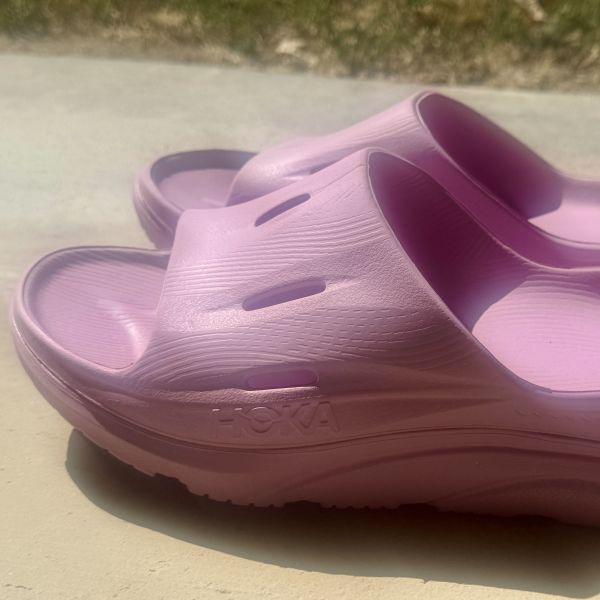
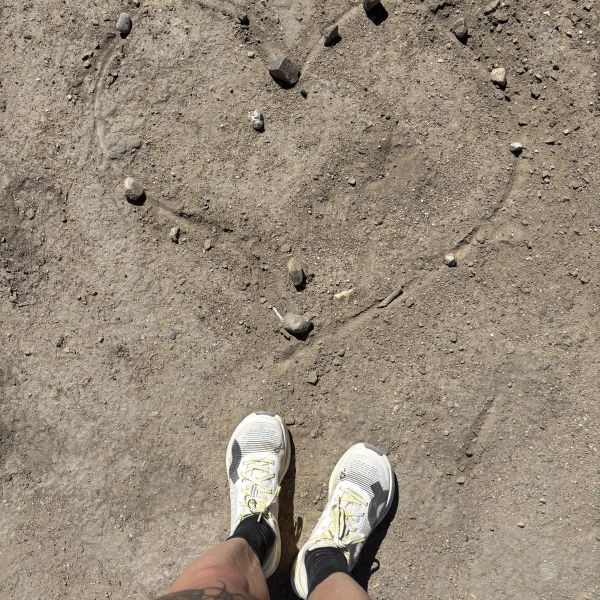
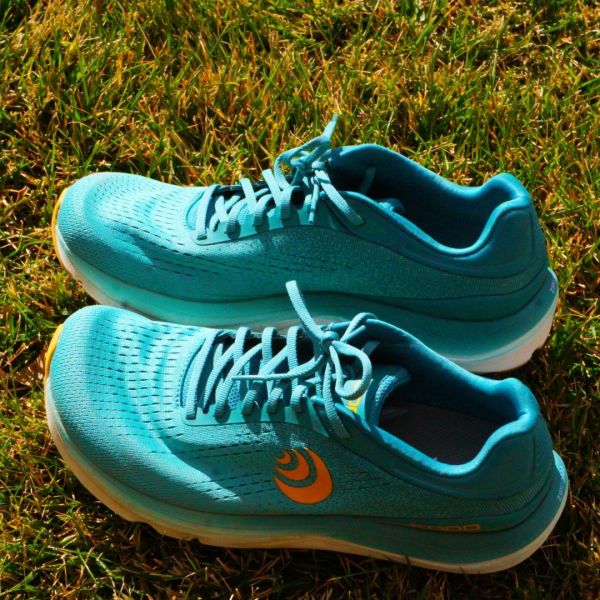

We Want to Give it to You!
